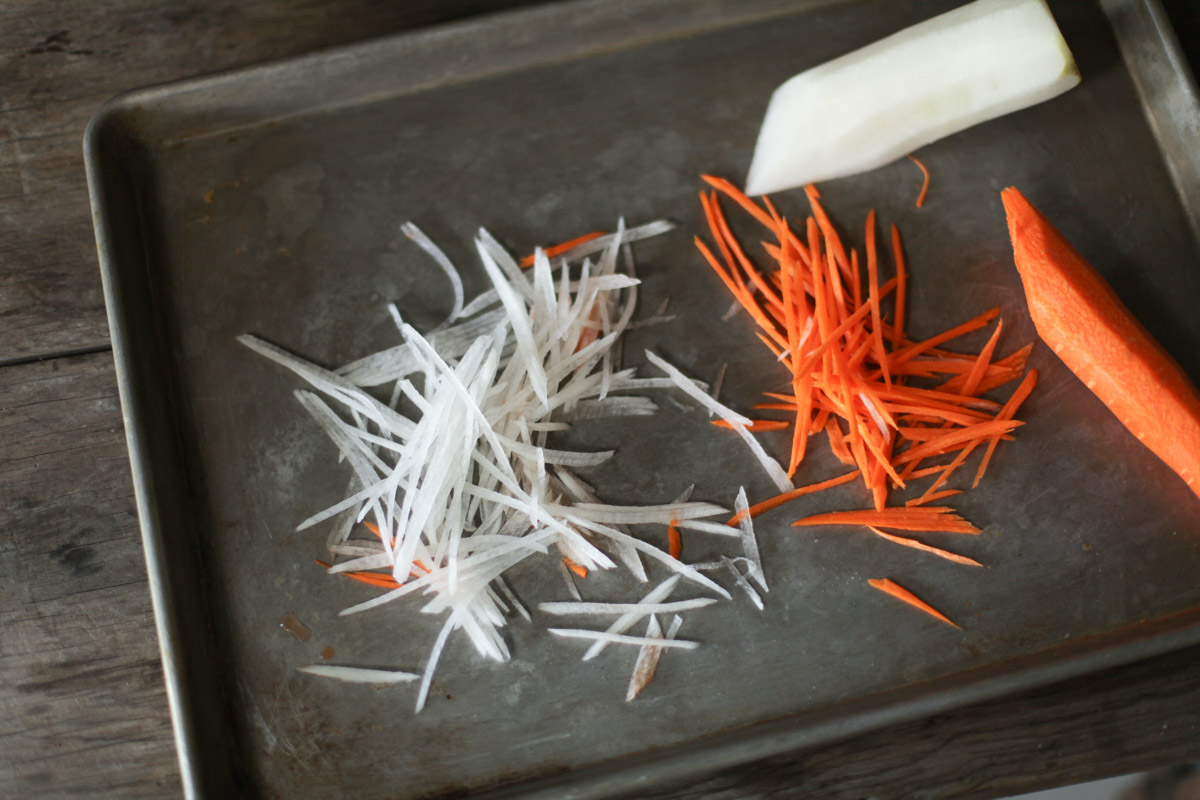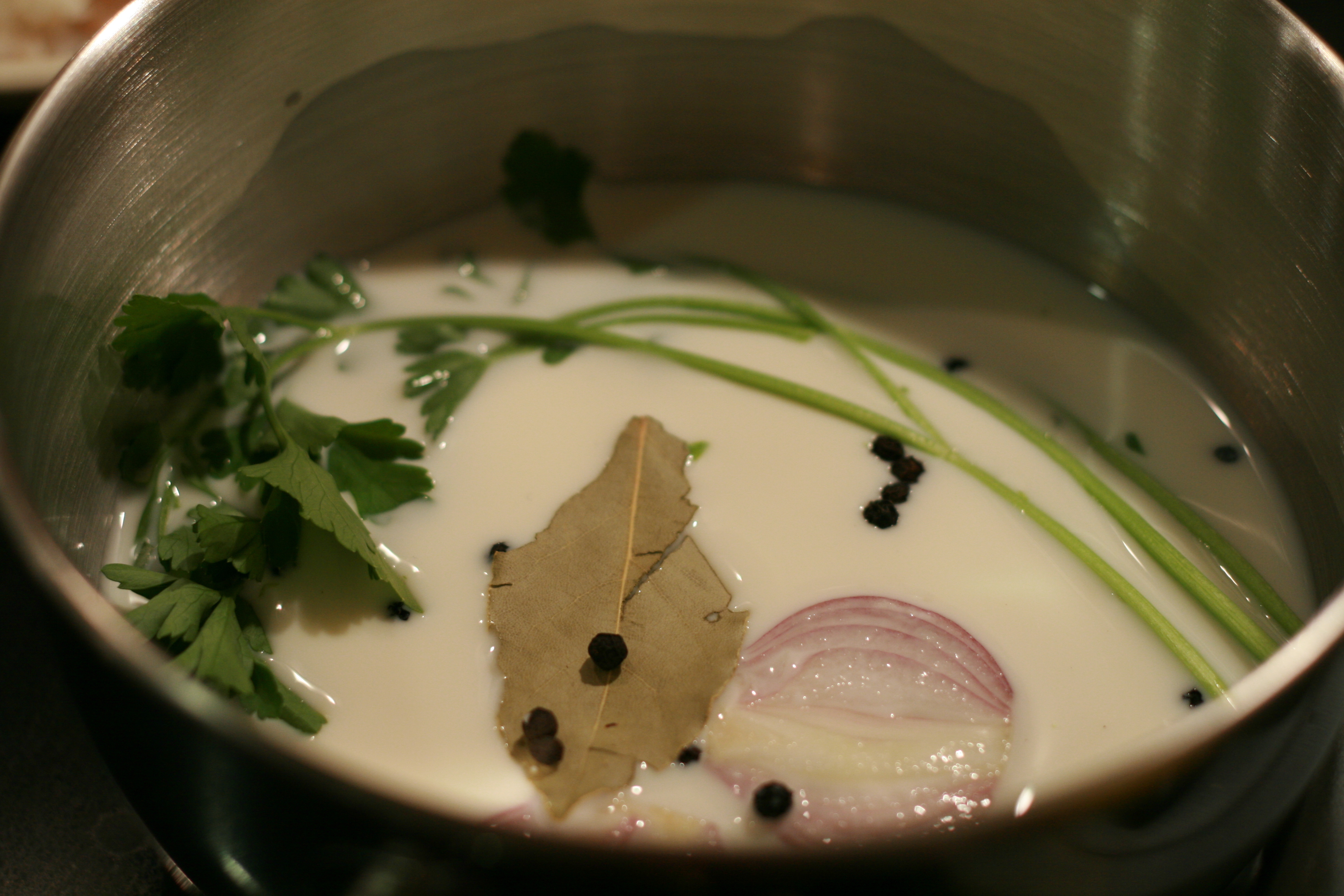|
Breton Sauce
Breton sauce (fr. ''sauce bretonne'') is a French compound sauce consisting of a velouté base with julienned onion, leeks, celery heart and mushrooms, mounted with butter and cream. It has been referred to as a brown version of ''sauce soubise'', which has as its base a béchamel sauce.''Larousse Gastronomique ' () is an encyclopedia of gastronomy. The majority of the book is about French cuisine, and contains recipes for French dishes and cooking techniques. The first edition included few non-French dishes and ingredients; later editions include many ...'' (1961) References {{DEFAULTSORT:Breton Sauce Brown sauces French sauces ... [...More Info...] [...Related Items...] OR: [Wikipedia] [Google] [Baidu] |
Cuisine Of France
French cuisine () is the cooking traditions and practices from France. It has been influenced over the centuries by the many surrounding cultures of Spain, Italy, Switzerland, Germany and Belgium, in addition to the food traditions of the regions and colonies of France. In the 14th century, Guillaume Tirel, a court chef known as "Taillevent", wrote '' Le Viandier'', one of the earliest recipe collections of medieval France. In the 17th century, chefs François Pierre La Varenne and Marie-Antoine Carême spearheaded movements that shifted French cooking away from its foreign influences and developed France's own indigenous style. Cheese and wine are a major part of the cuisine. They play different roles regionally and nationally, with many variations and ''appellation d'origine contrôlée'' (AOC) (regulated appellation) laws. Culinary tourism and the ''Guide Michelin'' helped to acquaint commoners with the ''cuisine bourgeoise'' of the urban elites and the peasant cuisine o ... [...More Info...] [...Related Items...] OR: [Wikipedia] [Google] [Baidu] |
Julienning
Julienne, , or french cut, is a culinary knife cut in which the food item is cut into long thin strips, similar to matchsticks. Common items to be julienned are carrots for , celery for , potatoes for julienne fries, or cucumbers for . Trimming the ends of the vegetable and the edges to make four straight sides makes it easier to produce a uniform cut. A uniform size and shape ensures that each piece cooks evenly and at the same rate. The measurement for julienne is . Once julienned, turning the subject 90 degrees and dicing finely will produce brunoise (). The first known use of the term in print is in François Massialot's (1722 edition). The origin of the term is uncertain. A is composed of carrots, beets, leeks, celery, lettuce, sorrel, and chervil cut in strips a half- in thickness and about eight or ten in length. The onions are cut in half and sliced thinly to give curved sections, the lettuce and sorrel minced, in what a modern recipe would term . The root vege ... [...More Info...] [...Related Items...] OR: [Wikipedia] [Google] [Baidu] |
Soubise Sauce
Soubise sauce is an onion sauce thickened with Béchamel sauce, pounded cooked rice, or cream.James Peterson, ''Sauces: Classical and Contemporary Sauce Making'', 4th ed., 2017, , p. 520 It is generally served with meats, game, poultry and vegetables. It was formerly often used to coat meat. It is first documented in 1836. It has many variations, the simplest including just onions, butter, and cream. History The sauce is said to take its name from Charles de Rohan, Prince de Soubise. Auguste Escoffier's recipe adds a thickened béchamel to butter-stewed onions. For a variant with rice and bacon fat, Escoffier cooks a high starch rice (such as Carolina rice) with fatty bacon, onions and white consommé, then purées the onions and rice before finishing with the usual butter and cream. Tomato purée seasoned with paprika or curry can be added to either variation, but Escoffier notes that béchamel is preferred to rice for its smoother consistency. The 19th-century Anglo-Italian ... [...More Info...] [...Related Items...] OR: [Wikipedia] [Google] [Baidu] |
Béchamel Sauce
Bechamel sauce ( ) is a sauce traditionally made from a white roux (butter and flour in a 1:1 mixture by weight) and milk. Bechamel may also be referred to as besciamella (Italy), besamel (Greece), or white sauce (U.S.). French, Italian and Greek bechamel sauce recipes include salt and nutmeg as a seasoning base. Bechamel sauce is one of the "mother sauces" of French cuisine. Origin The first recipe of a sauce similar to bechamel is in the book by François Pierre de La Varenne in 1651, made with a roux, as in modern recipes. The name of the sauce was given in honour of Louis de Béchameil, a financier who held the honorary post of chief steward to King Louis XIV of France in the 17th century. The first named béchamel sauce appears in ''The Modern Cook,'' written by Vincent La Chapelle and published in 1733, in which the following recipe for "Turbots (a la Bechameille)" appears: There are many legends regarding the origin of bechamel sauce. For example, it is said ... [...More Info...] [...Related Items...] OR: [Wikipedia] [Google] [Baidu] |
Larousse Gastronomique
' () is an encyclopedia of gastronomy. The majority of the book is about French cuisine, and contains recipes for French dishes and cooking techniques. The first edition included few non-French dishes and ingredients; later editions include many more. The book was originally published by Éditions Larousse in Paris in 1938. Background The first edition (1938) was edited by Prosper Montagné, with the collaboration of Dr Alfred Gottschalk, with prefaces by each of author-chefs Georges Auguste Escoffier and Philéas Gilbert (1857-1942). Gilbert was a collaborator in the creation of this book as well as ''Le Guide Culinaire'' (1903) with Escoffier, leading to some cross-over with the two books. It caused Escoffier to note when he was asked to write the preface that he could "see with my own eyes," and "Montagné cannot hide from me the fact that he has used ''Le Guide'' as a basis for his new book, and certainly used numerous recipes." The third English edition (2001), which run ... [...More Info...] [...Related Items...] OR: [Wikipedia] [Google] [Baidu] |
Brown Sauces
Brown is a color. It can be considered a composite color, but it is mainly a darker shade of orange. In the CMYK color model used in printing or painting, brown is usually made by combining the colors orange and black. In the RGB color model used to project colors onto television screens and computer monitors, brown combines red and green. The color brown is seen widely in nature, wood, soil, human hair color, eye color and skin pigmentation. Brown is the color of dark wood or rich soil. According to public opinion surveys in Europe and the United States, brown is the least favorite color of the public; it is often associated with plainness, the rustic, feces, and poverty. More positive associations include baking, warmth, wildlife, and the autumn. Etymology The term is from Old English , in origin for any dusky or dark shade of color. The first recorded use of ''brown'' as a color name in English was in 1000. The Common Germanic adjectives ''*brûnoz and *brûnâ'' meant b ... [...More Info...] [...Related Items...] OR: [Wikipedia] [Google] [Baidu] |


